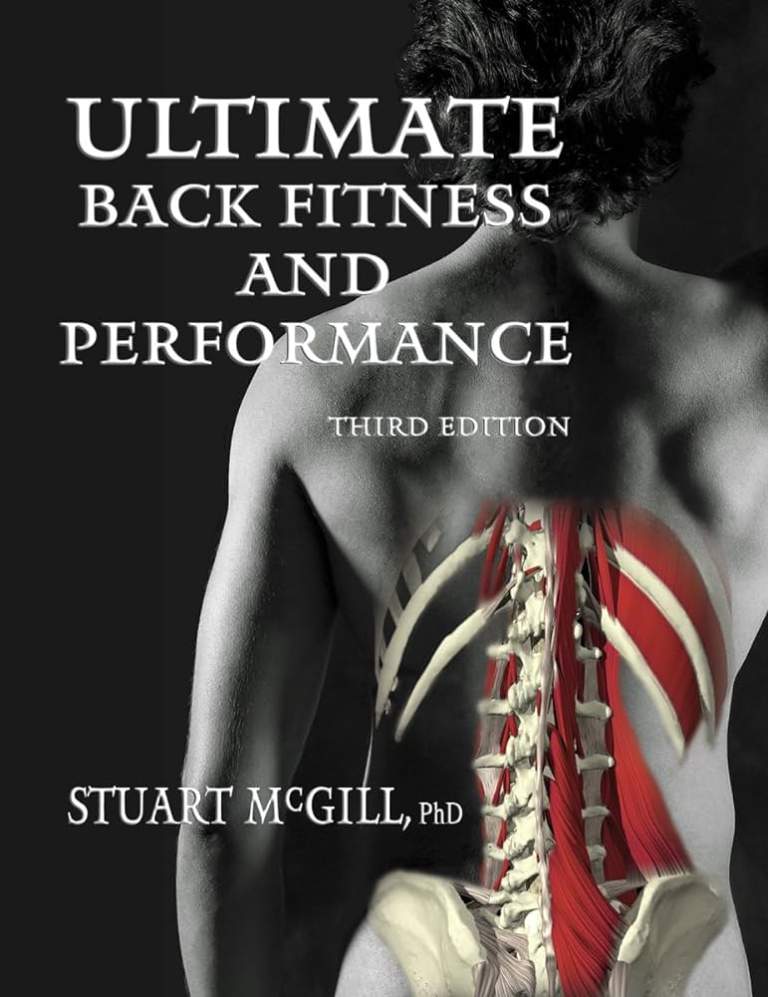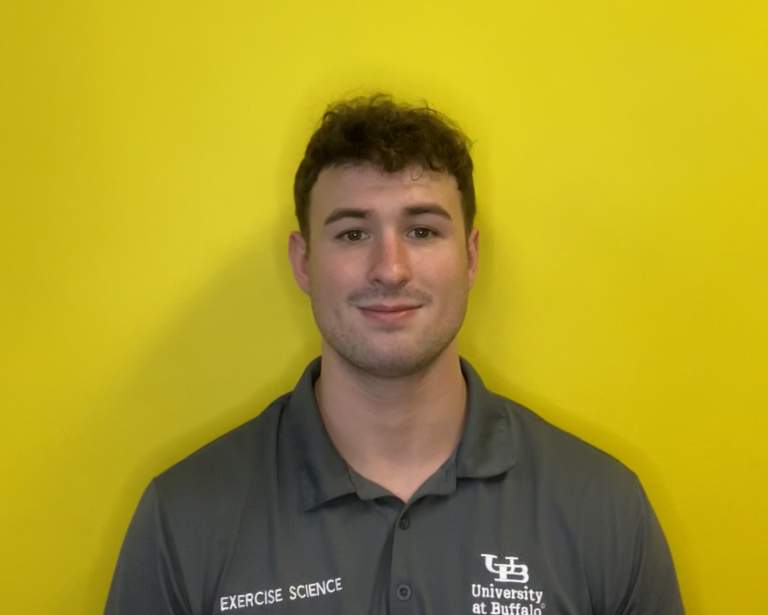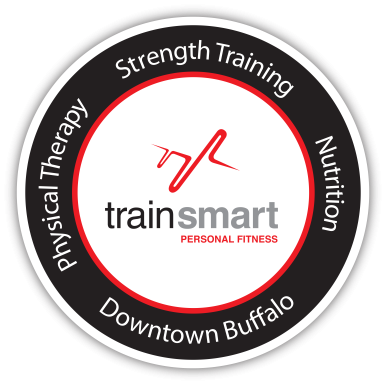By Jack Davis
Now we will get into some of Dr. McGill’s favorite strength exercises.
1. Pushup on Ball
The pushup is a great exercise to not only train the horizontal push movement, but also integrate the core musculature. By altering the position of the hands, the exercise can be changed drastically. By staggering the hands with one forward one behind, shoulder activation is altered and core activation is enhanced. Dr. McGill also likes to add in variance to the pushup by placing one or both hands on a medicine ball. This causes an increased demand from the core and has been recorded to elicit a 75% MVC of the rectus abdominis and obliques.
*Important Note*
With very sensitive/acute low backs it may be safer to avoid single arm and staggered pushups as there is more compressive force resisting a twisting motion. To increase core activation focus on bilateral pushups with a labile surface (med ball, Bosu ball etc.)
2. Pullups
The pullup is a great upper body vertical pull exercise and Dr. McGill says, “should be the goal of any strength/function program”(page 268, McGill). Dr. McGill prefers the normal overhand grip as more emphasis is placed onto the brachioradialis leading to a strong, athletic grip. To begin, first squeeze the scapula, then stiffen the core and squeeze the glutes. Then, pull up explosively. Focus on keeping all reps quick, explosive, and powerful. Rest and repeat.
3. Standing Single Arm Cable Press
This is a great exercise for creating strength through multiple different directions and dimensions. Dr. McGill prefers this exercise to the normal bench press because it can be trained in a standing, sport specific position. By doing a single arm cable press you also are forcing your core to stabilize the torso and resist any twisting. The single arm press activates the core much more than the conventional bench press and even activates the latissimus dorsi to help stabilize posture.
4. One Arm Lift and Walk
This is a great exercise to develop whole body strength with a real focus on the torso. The athlete will hip hinge down and grab a kettlebell with one arm, stand up and walk. This requires athletes to utilize the posterior chain to get the weight to the starting position. The obliques and quadratus lumborum are the primary stabilizers, however the core in total is active. It is important to maintain a strong grip with full hand contact in order to activate the entire rotator cuff. Be sure to maintain a neutral spine and stand tall while walking.
5. Single Leg Squat
The common staple of a leg strengthening is the barbell back squat. The flaw with this though, is there is minimal glute activation, and fails for athletes who are commonly jumping or cutting from one leg. The single leg squat incorporates the glutes, adductors, plenty of proprioceptive feedback and demands balance. Focus on grabbing the ground with your feet, and maintaining a neutral spine as you sit down.
Stage 5: Speed, Power, and Agility
Power is the ability to generate force quickly. Power is generated in the extremities and is transmitted through the torso. Maintaining a stiff, braced core allows the power to be transferred without a loss of force. In order to be powerful you must be able to quickly develop force and contract muscle but also relax quickly. These rapid on/off actions by the muscle is what separates average and elite athletes. To improve this, you must train for power. Power training includes exercises like med ball tosses, leaps, bounding, etc. Because power training typically involves rapid movement, there is even extra caution that needs to be taken prior. Before any power training one should complete a warm-up and some core training to establish stable motor patterns. Many people who try and train both strength in power make a common mistake. Many train both heavy and light days. By falling into this trap, many people end up training the same exercises with varying loads, leaving many gains and adaptation to be left on the table. Rather, training should be viewed as either fast or slow. By training “slow” with resistance you will build up both musculoskeletal and neurological capacity and fast training will enhance performance. And one last key component. There are no rules. Make these power drills as specific as possible to the activity/sport being performed. As long as proper form is maintained any exercise can be made into a power exercise. Now, we will go through some of Dr. McGill’s favorite power training exercises.
1. Knee Flexion Power
This drill is designed to develop power with knee flexion and the ability to quickly flex the knee. This exercise is helpful if you want to increase speed and agility. During this exercise it is important to maintain a strong core brace while thinking about “throwing” the ball with your feet quickly.
2. Quick Feet
This drill requires hip flexion, balance, and whole body stability. For this exercise you get in a lunge position and jump up quickly to switch feet position. Keep your focus on switching feet as quickly as possible while not losing balance. To make it more difficult, weight can be added.
3. Clapping Push Up
This exercise is an upper body push power exercise. The clapping pushup builds short range stiffness.
Part 3: Conclusion
So to summarize Dr. McGill’s approach to training. First you must be able to activate the core and generate stiffness around the spine. By doing so you prevent the painful and tissue damaging micromovements. Then you must develop proper motor patterns. Faulty movement patterns have been found to not only inhibit performance, but also can be a cause of injury and impact recovery. Then you must build stability with these movement patterns. This stage requires a focus on more core training to enhance spine stability as well as balance to ensure that exerted force is going where it should. Then after developing proper motor patterns and stability you must build up muscular endurance. By building up endurance, you are improving the body’s ability to maintain a neutral spine and ability to maintain intended posture. Then after all of this, you are able to move into strength and power training. It is important to build a strong foundation prior to training to improve performance. A house requires a strong foundation or collapse is inevitable. By hitting the foundations or building blocks of training, you improve your tolerance to exercise and will be able to handle more load with a reduced risk of injury.
Dr. Stuart McGill is an expert in spine health and biomechanics and over his career has made life-changing discoveries in research, as well as helped rehabilitate many and help them with recovery. He has helped world champions return to championship levels (sometimes better than before!) and everyday people too. By using Dr. McGill’s 5 stage approach you will find that even with a bad back you can still train and improve health, performance and decrease back pain. I strongly recommend you use more resources from Dr. McGill, whether you read the book Ultimate Back Fitness and Performance or some of his others. Check out his website www.backfitpro.com. Dr. McGill’s teachings have a strong impact here at TrainSMART Personal Fitness because what Dr. McGill does works. If you suffer from back pain or simply want to be the best athlete you can, using Dr. McGill’s teachings will limit risk while making you the best version of yourself.
Sources
McGill, Stuart. Ultimate Back Fitness and Performance. Backfitpro Inc.


